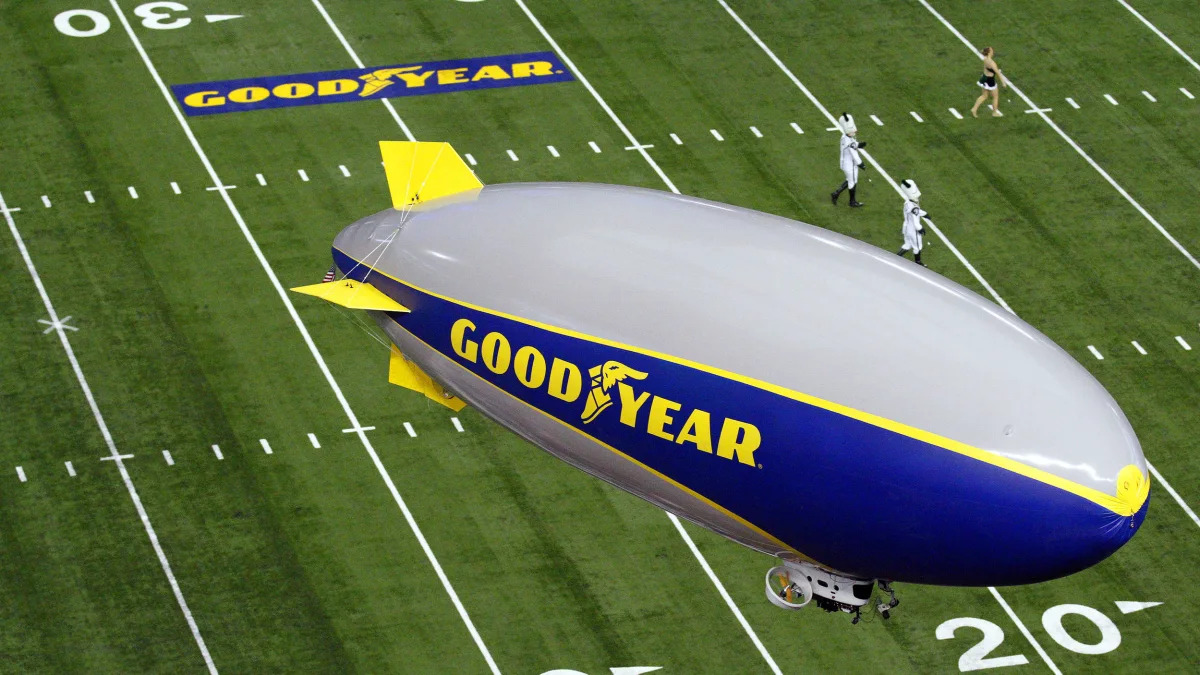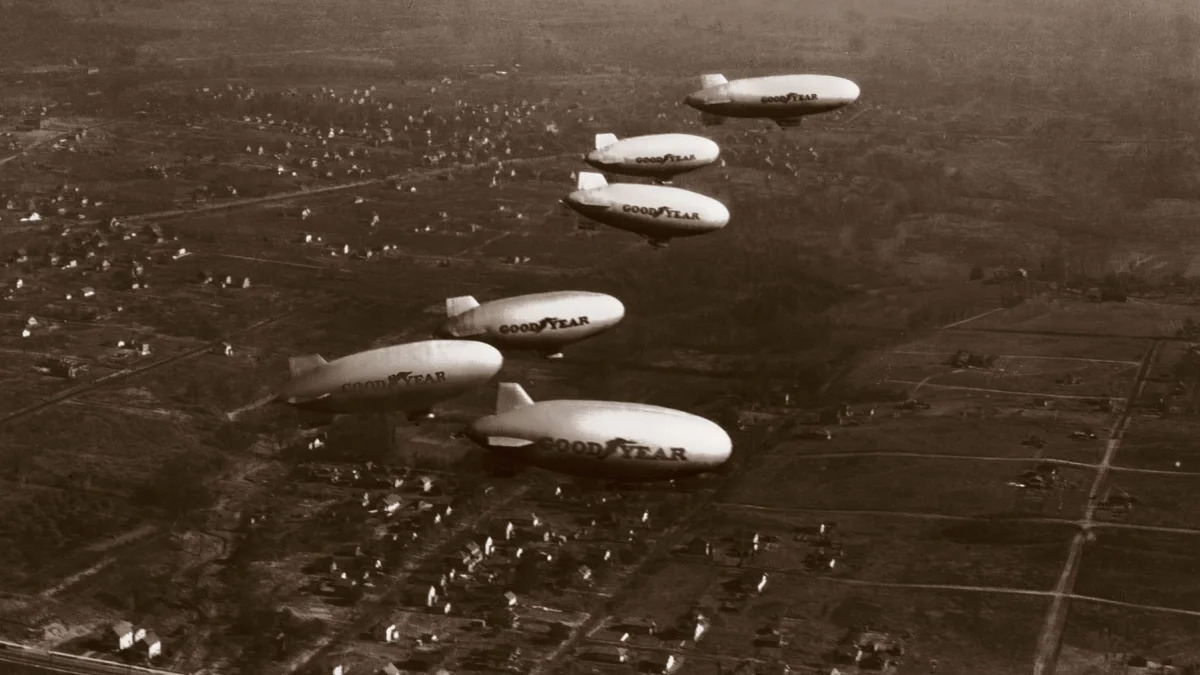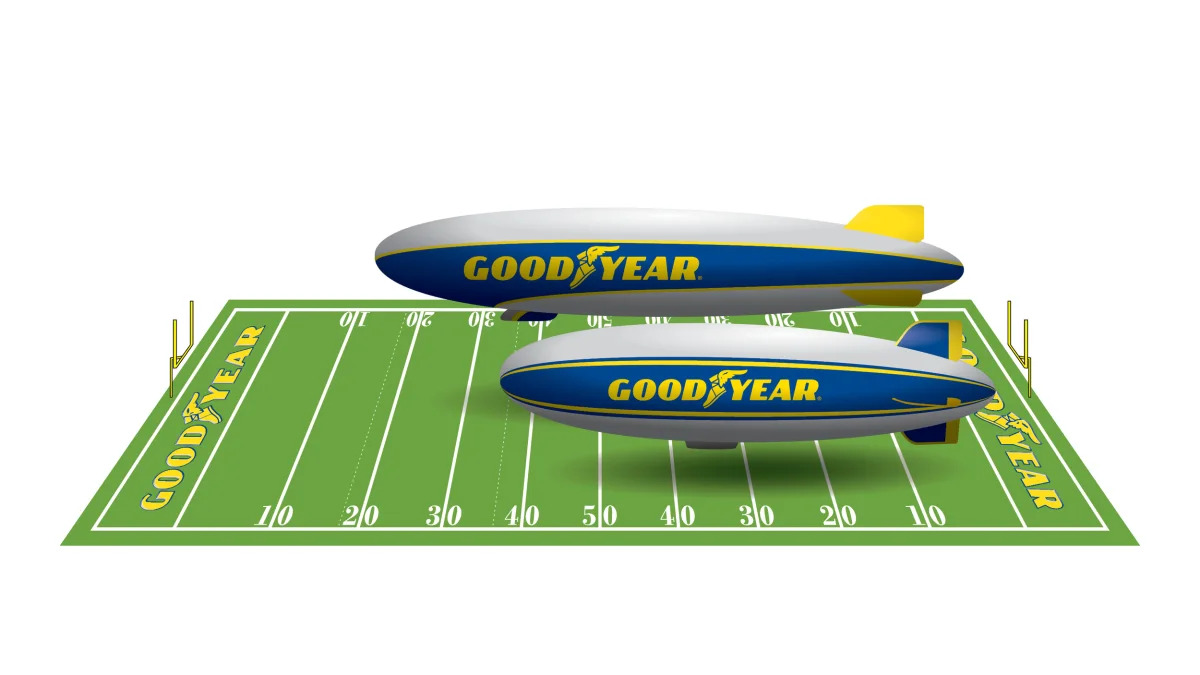Old vs New: Goodyear Blimps replaced by Zeppelins

-

- Image Credit: Icon Sports Wire via Getty Images
A national icon is about to change forever
It's become a common sight at sporting and entertainment events across the country, and when it's in town, you know something big is happening. It's the Goodyear Blimp, but, these days, it's not really a blimp at all.
Follow along as we take a brief look at the history of the Goodyear Blimp before changing course to investigate its future. Click on the image above to get started.
-
- Image Credit: Goodyear
Goodyear's first commercial blimp
The Goodyear Tire & Rubber Company was founded in 1898, but it wasn't until 1910 that the company founded its Aeronautics Department. Goodyear's first blimp came in 1912. By 1917, the US Navy had ordered 9 airships from the company.
The Pilgrim, seen in this historical black and white image, was built in 1925. It was the first commercial non-rigid airship flown using helium, and featured a landing wheel and a mast that allowed it to connect to an automobile on the ground. Goodyear says this portable holding solution was recognized as a milestone in aviation progress by the Smithsonian Institution.
-
- Image Credit: Goodyear
Flying in formation
Here we see Goodyear's Pilgrim, Neponset, Vigilant, Mayflower, Defender, and Puritan blimps flying in formation over the city of Akron, Ohio. This photo was taken in 1930, just before a big shift in focus took place. Click on the image above to find out what changed.
-
- Image Credit: Goodyear
Enter the Advertising Age
It didn't take long for Goodyear to realize the marketing power of its fleet of airships. Here, we can see the Defender blimp, which was the first airship in the world to carry a lighted sign. It got a very period-sounding Neon-O-Gram name and was made up of 10 removable aluminum framed panels that held neon light tubes. Each frame weighed 35 pounds and stood six feet tall and four feet wide, says Goodyear.
Soon, a record player, microphone, and loudspeaker were added so that Goodyear could “blimpcast” recordings and live greetings to the public below.
-
- Image Credit: Smith Collection/Gado via Getty Images
Goodyear joins the Navy
This photograph of the USS Akron inside the Goodyear-Zeppelin Dock in 1933 comes from the United States National Archives. Shortly after the Japanese attack on Pearl Harbor, the US Navy began using Goodyear's blimps to escort warships and shipping vessels on the open waters. According to Goodyear, there were "no reported loss of shipping when a blimp was on watch."
From 1942 through 1944, Goodyear built 104 Navy airships at Wingfoot Lake, 44 ships at Moffett Field, and 4 more at the Akron Airdock.
-
- Image Credit: Goodyear
Big changes in the air
After the end of World War II, Goodyear again used its fleet of blimps for commercial use. On January 1, 1955, the Enterprise V became the first aerial platform to provide a live television feed of a nationally televised program. NBC provided the equipment to aid in the broadcast of the Tournament of Roses Parade in Pasadena, California. In 1967, Goodyear switched to using its own broadcasting equipment, meaning it no longer depended on the networks to provide footage.
But things were about to change, drastically. A completely new lighter-than-air ship would soon replace the aging blimps.
-
- Image Credit: Goodyear
It's a bird... It's a plane... It's a zeppelin?
Goodyear's latest blimps aren't really blimps at all. They're zeppelins. Designed by Zeppelin Luftschifftechnik GmbH with modifications requested by Goodyear, the new airships use a semi-rigid exterior hull instead of relying solely on helium to provide their shape.
In this picture, the old blimp can be seen alongside the newer zeppelin. A modernized coat of paint makes the two ships easy to pick out, even from a distance.
-
- Image Credit: Goodyear
Why the change?
at 246 feet, Goodyear's new fleet of zeppelins are 54 feet longer than its older blimps. The new fleet isn't just larger – they can carry more weight, are quieter, and more efficient than the blimps they replace.
But don't worry, Goodyear says the term blimp is sticking around. "Recognizing that the term “blimp” is not only a technical description but, thanks to Goodyear, a cultural one as well, the use of the term for the new airship is not only accepted but encouraged by the Company."
-
- Image Credit: Goodyear
The more things change...
Goodyear now has two semi-rigid airships in its fleet, Wingfoot One and Wingfoot Two. Even if they aren't technically blimps, they'll still patrol the skies around all the biggest sporting and entertainment events in America. So keep your eyes up, blimp lovers. The future has officially arrived.







